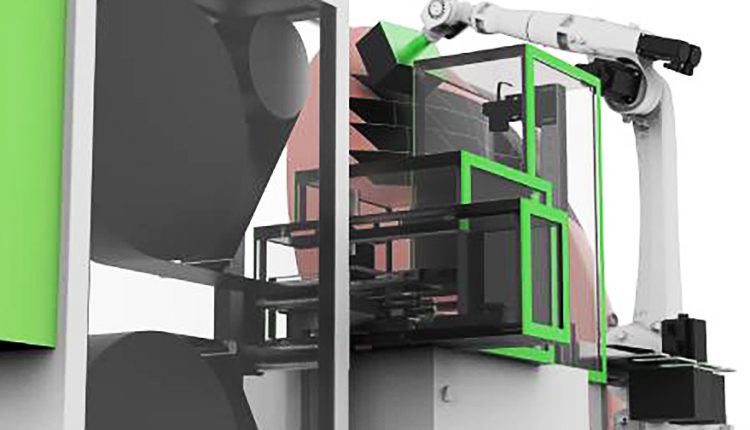Fiber Patch Placement concepts for aerospace industry
Fiber Patch Placement (FPP) has become the preferred technology for the automated production of complex fiber composite components. The additive manufacturing of components with suitably sized patches is used especially in the aerospace and automotive industries, for medical devices and sports equipment.
In close cooperation with leading manufacturers of components for the aerospace industry, Cevotec has further developed the entire patch placement process according to the requirements of the industry.
Cevotec’s FPP specialists are particularly interested in complex sandwich components with their sophisticated material mix, such as adhesive films, glass fiber and carbon fiber layers. These different materials are used to improve the adhesion and processability of carbon fiber material with the often-used aluminum honeycomb sandwich cores.
Felix Michl, Cevotec’s CTO, stated: “The SAMBA Multi production systems, which we are currently developing, enables the automated lay-up of this special multi-material mix in one single system.”
In addition to glass fiber fleeces, metal structures and wood cores, also honeycomb cores, solid foams and additional materials have already enjoyed load-adjusted fiber patch reinforcements. Depending on process requirements, this can be done in-line or parallel to line production to optimize cycle times.
SAMBA Multi has parallel feeding units for different materials that are processed in one production system and placed precisely on 3D sandwich cores or preforming tools. By mounting the FPP unit on a linear axis, the concept also enables the production of particularly long and wide components in aerospace applications.
Adapted to specific component sizes, we also scaled the patch grippers to DIN-A5 and DIN-A4 size to meet the requirements of common aircraft components. An integrated gripper station enables the exchange of grippers during the process.
Thorsten Groene, Managing Director of Cevotec, explained: “The automated multi-material lay-up of complex sandwich components has an extremely positive effect on process times and thus the production volume. The fiber deposition with controlled pressure and heat enables skipping intermediate compactions and thus reduces process times significantly. FPP sustainably reduces recurring production costs in many applications. Material savings of 20-50% play a major role, of course, but automation with FPP often enables further optimization of the overall process.”
Another advantage of SAMBA Multi is the high scalability of the production process.
Michl added: “One and the same process works both for a few hundred and several thousand units per year. Thanks to the quick-change system and short set-up times, a product change on the system is no problem and economically reasonable: During ramp-up, an FPP system’s capacity can be used for several components. With increasing quantities, the machine park is expanded and the systems become more dedicated. The advantage: the process remains the same – no new product development and no re-qualification of parts are necessary.”
Dr Neven Majic, EVP at Cevotec, concluded: “Since both FPP and AFP processes are used in the aerospace industry, the question whether laminate planning for FPP and AFP can be combined in our CAE software ARTIST STUDIO, naturally arose in the course of development. The clear answer: yes, it can be combined.”
Therefore, the FPP specialists are currently extending ARTIST STUDIO by the relevant features for laminate design with endless fiber tapes as used in AFP processes. Seamlessly integrated into ARTIST STUDIO, the new module TAPE ARTIST will also use MOTION ARTIST for machine data generation and process simulation. TAPE ARTIST can also be combined with PATCH ARTIST to one joint module, enabling engineers to design integrated laminates based on AFP and FPP technology.
Like SAMA Multi, TAPE ARTIST will be presented to the public at leading trade fairs and conferences this fall (Composite Europe, Advanced Engineering, GoCarbon Fiber) and will be commercially available towards the end of the year.

